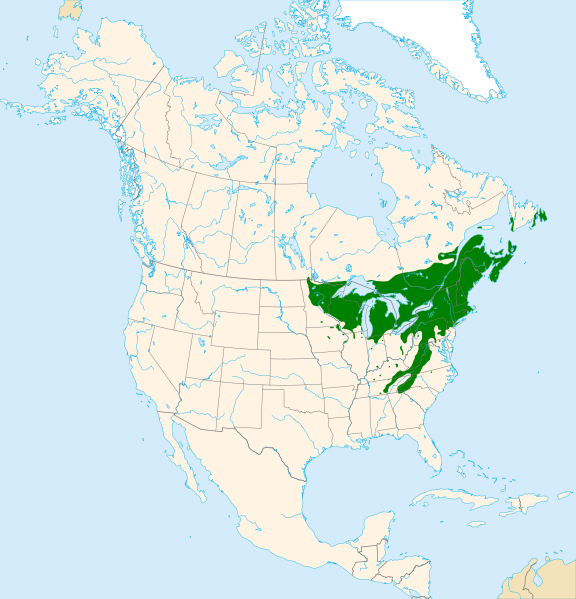Yellow Birch : Range and Reproduction

The range of yellow birches in North America. They are highly concentrated in Quebec and other areas of Canada. (Halava, 2011)
The yellow birch is monoecious, which means both the male and female flowers can be found on the same tree. The flowers are known as a catkins. There are either the staminate (male) or the pistillate(female). The female catkin usually will be around half an inch in size. The male catkin can become up to four inches long and has a elongated cylinder shape during the blooming period (late spring).The yellow birch reseeds itself to reproduce, through pollination by the wind, which is why it has such broad range in the north.
The map shows the native range of the yellow birch. Large concentrations of yellow birches reside in Quebec, Ontario, Maine and New York. Fifty percent of yellow birches in North America are found in Quebec. However, populations of the yellow birch have been decreasing in size since the 1930’s due to the long winter thaws followed by rapid freezing. The water transport system is disrupted by theses cycles of thawing and freezing which results in the death of the tree.
The main reason that yellow birches live so far up north is that they thrive in cool areas with high precipitation. Yellow birches can do very well in snowy climates. They can also live further south, however, it does seem to have a temperature limit around 70 degrees Fahrenheit; it usually faces difficulty in reproducing and redistributing itself in warmer climates.
